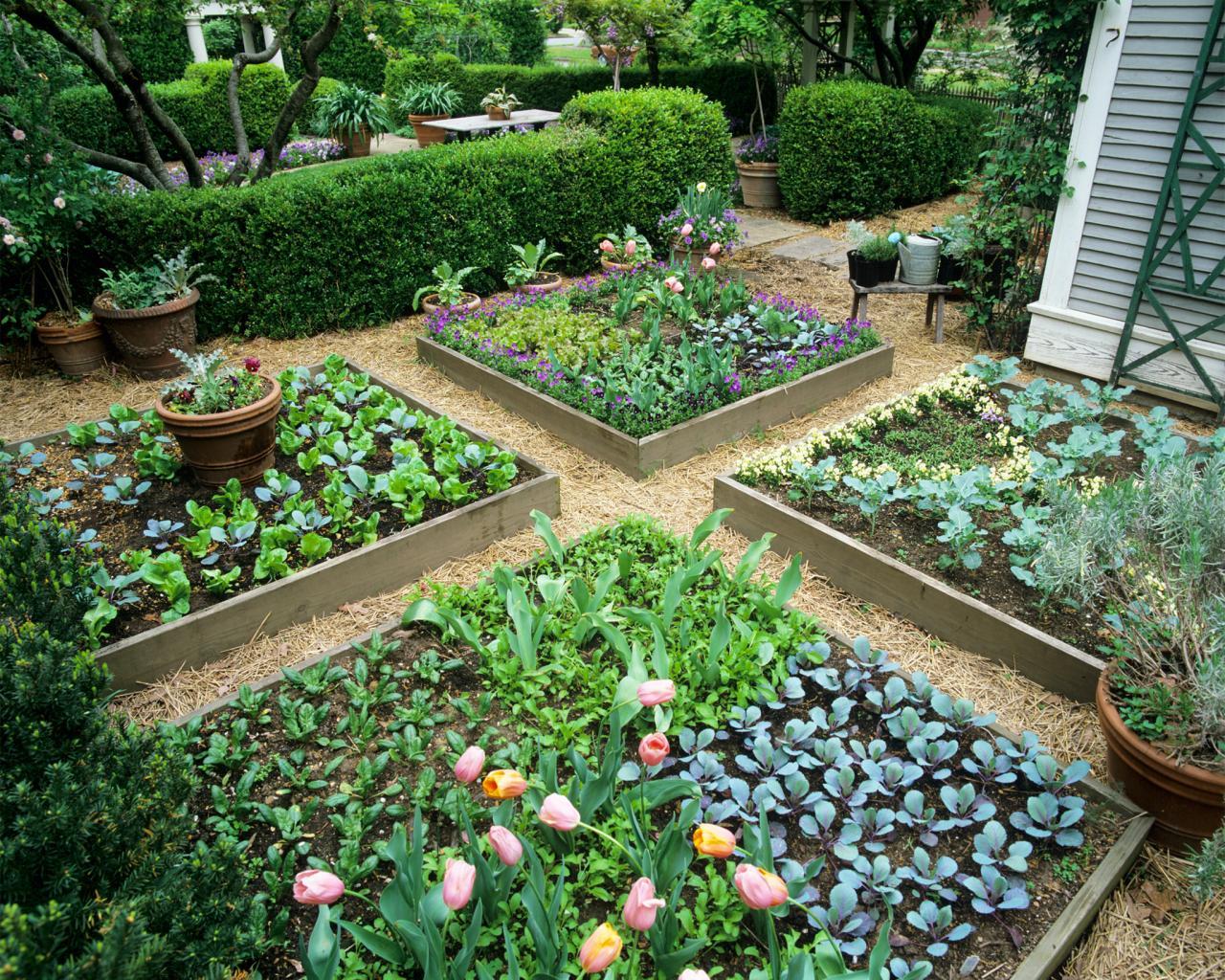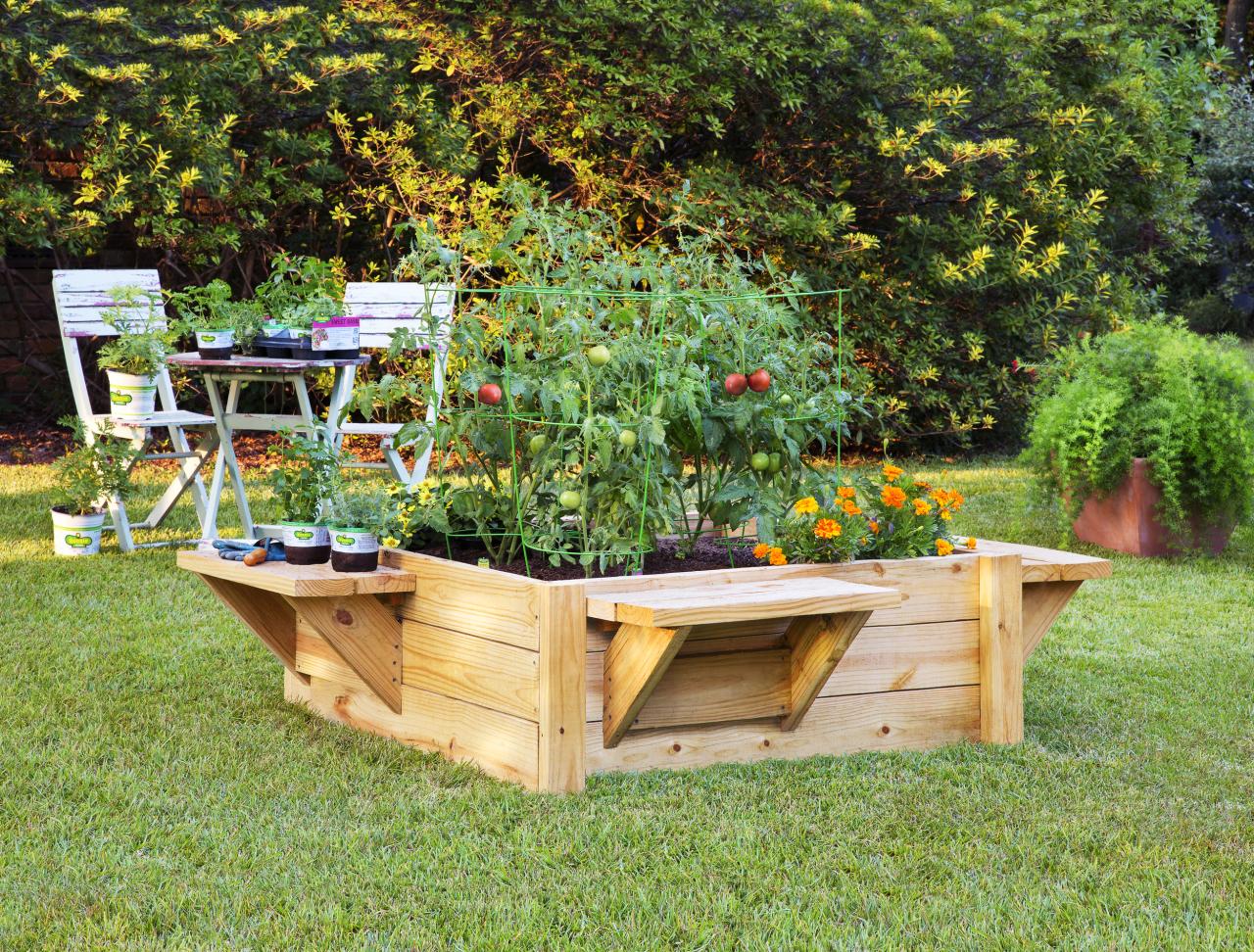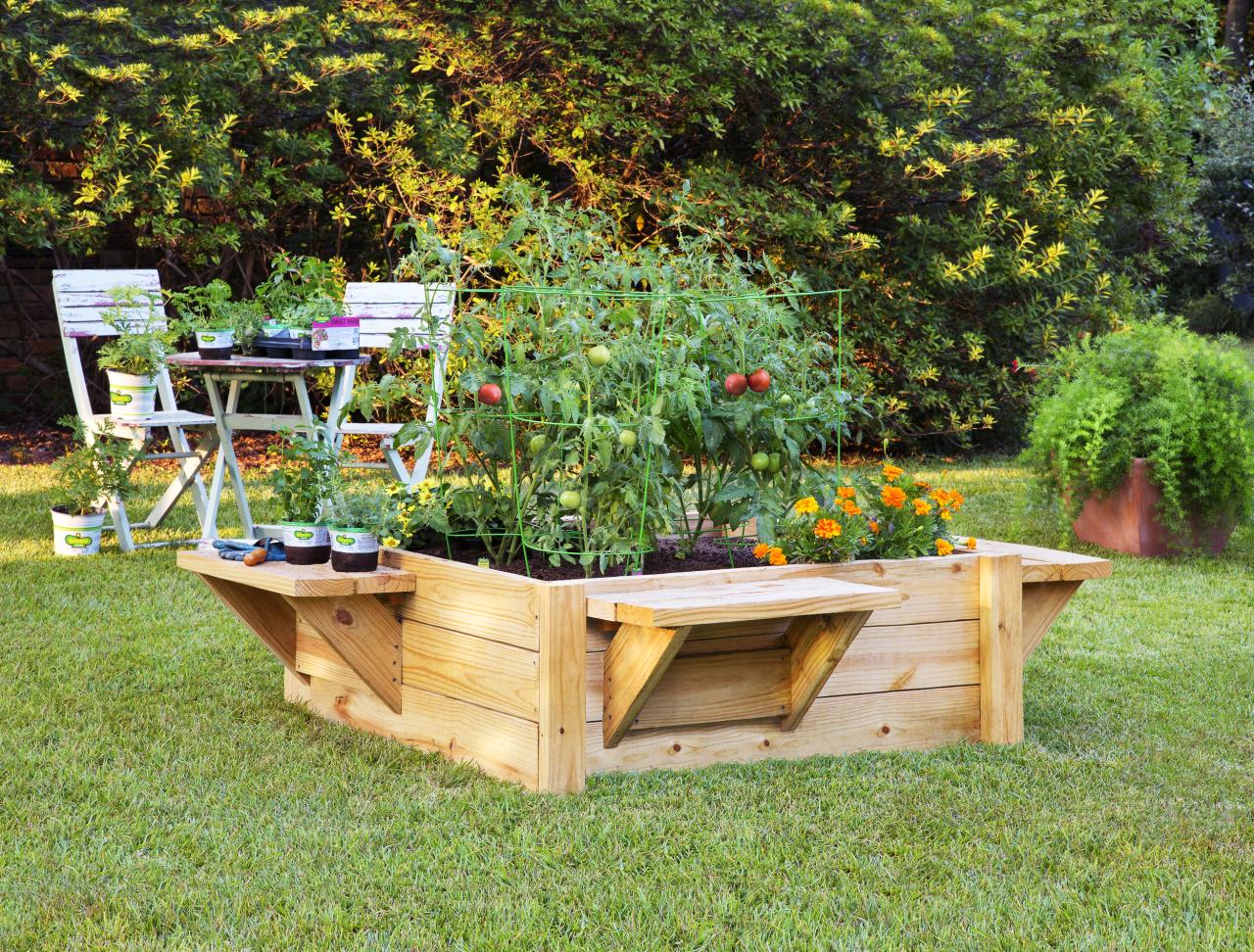Why Some Plants Will Fail in Raised Bed Gardens? While raised beds offer many benefits, such as improved drainage and soil control, they also present unique challenges that can lead to plant failure if not addressed properly. Understanding these challenges and implementing the right strategies can ensure your raised bed garden thrives.
From soil composition and watering practices to sunlight exposure and pest management, each element plays a crucial role in the success of your raised bed garden. This guide explores the common pitfalls that can hinder plant growth in raised beds and provides practical solutions to overcome these challenges.
Soil Issues
Raised bed gardens offer numerous advantages, but they also present unique challenges related to soil. Unlike in-ground gardens, the soil in raised beds is typically not the same as the surrounding native soil, requiring careful consideration of its composition and management.
Soil Composition
The composition of soil in raised beds can differ significantly from that of in-ground gardens. Raised beds often utilize a mixture of soil amendments, such as compost, peat moss, and vermiculite, to create a rich and fertile growing medium. These amendments improve soil structure, drainage, and nutrient content, providing a more favorable environment for plant growth.
Soil Drainage
Proper soil drainage is crucial for plant health in raised beds. Excessive water retention can lead to root rot, a common cause of plant failure. Raised beds, due to their elevated structure, can sometimes experience poor drainage if the soil mix is not properly formulated.
Soil Amendments
Several common soil amendments are used in raised beds to enhance soil quality and support plant growth.
- Compost: Compost is a valuable amendment that improves soil structure, increases water retention, and provides essential nutrients for plants. It is a rich source of organic matter, enhancing soil fertility and promoting healthy root development.
- Peat Moss: Peat moss is a highly absorbent material that improves soil aeration and water retention. It also helps to lower soil pH, which is beneficial for acid-loving plants.
- Vermiculite: Vermiculite is a lightweight mineral that improves soil drainage and aeration. It also helps to retain moisture and nutrients, creating a favorable growing environment for plants.
- Worm Castings: Worm castings are a natural fertilizer rich in nutrients and beneficial microorganisms. They improve soil structure, enhance nutrient availability, and promote healthy plant growth.
Soil Testing
Soil testing is essential to determine the suitability of soil for raised bed gardening.
While raised beds offer many advantages, some plants struggle to thrive in these confined spaces. Poor drainage, inadequate soil depth, and limited root space can all contribute to plant failure. If you’re facing these challenges, consider exploring alternative planting methods, such as hanging baskets.
The Pros and Cons of Growing Hanging Plants can provide insights into the benefits and drawbacks of this approach. By understanding the factors that influence plant success, you can make informed decisions about the best planting method for your garden.
- Home Soil Test Kits: These kits are readily available and provide a basic assessment of soil pH, nutrient levels, and other important factors.
- Laboratory Soil Testing: Laboratory soil testing offers a more comprehensive analysis of soil composition, including nutrient levels, pH, and potential contaminants.
Nutrient Requirements
Different plant species have varying nutrient requirements. Understanding these requirements is crucial for choosing the right plants for your raised bed garden.
Plant Species |
Nitrogen (N) |
Phosphorus (P) |
Potassium (K) |
Suitability for Raised Beds |
|---|---|---|---|---|
Tomatoes |
High |
Medium |
Medium |
Excellent |
Lettuce |
Medium |
Medium |
Medium |
Excellent |
Peppers |
High |
Medium |
Medium |
Excellent |
Carrots |
Medium |
High |
Medium |
Good |
Beans |
Medium |
Medium |
Medium |
Good |
Watering Practices
Raised bed gardens, with their contained growing environment, demand a different approach to watering compared to traditional in-ground gardens. Understanding these differences is crucial to prevent plant failure.
Watering Consistency, Why Some Plants Will Fail in Raised Bed Gardens
Consistent watering is vital for raised beds, as the soil volume is smaller and prone to drying out faster. Unlike in-ground gardens, where moisture can be drawn from a larger soil mass, raised beds rely on regular replenishment.
Watering Methods
- Drip Irrigation: This method delivers water directly to the plant roots, minimizing evaporation and ensuring efficient water usage. Drip irrigation systems are particularly effective in raised beds, providing precise water delivery and reducing water waste.
- Hand Watering: This method requires careful attention to ensure even moisture distribution. Frequent hand watering, especially during hot weather, is essential to maintain adequate soil moisture.
Impact of Overwatering and Underwatering
- Overwatering: Excess water can lead to root rot, suffocating the plant’s roots and hindering nutrient absorption. This can manifest as wilting, yellowing leaves, and stunted growth.
- Underwatering: Insufficient water can cause dehydration and wilting, leading to plant stress and potential death. Plants may exhibit drooping leaves, brown tips, and reduced growth.
Watering Schedules
Plant Type |
Watering Frequency (Typical) |
Factors Influencing Watering |
|---|---|---|
Tomatoes |
Daily or every other day |
Weather, soil type, plant size |
Lettuce |
Every other day |
Weather, soil type, plant stage |
Basil |
Daily |
Weather, soil type, plant size |
Assessing Soil Moisture
The finger test is a simple yet effective way to determine soil moisture. Insert your finger about 2 inches into the soil.
One common reason plants fail in raised beds is due to pesky gnats that feast on their roots. These tiny insects can quickly overwhelm a garden, causing wilting and stunted growth. If you’re battling a gnat infestation, consider building a simple DIY trap to combat the problem.
Check out this helpful guide on How to Create a DIY Gnat Trap for Your Plants to learn how to make your own. By eliminating these pesky insects, you can give your raised bed plants the best chance of thriving and producing healthy blooms.
- If the soil feels dry, it needs watering.
- If the soil feels slightly moist, it can wait for another day.
- If the soil feels very moist, watering can be delayed.
Sunlight and Temperature
Sunlight and temperature are crucial factors that significantly impact plant growth in raised beds. Understanding their role and how they affect plants is essential for achieving successful gardening outcomes.
Sunlight Requirements for Different Plants
Plants have varying sunlight requirements, ranging from full sun to partial shade. It is essential to choose plants that thrive in the amount of sunlight your raised bed receives.
- Full Sun Plants:These plants need at least 6 hours of direct sunlight per day. Examples include tomatoes, peppers, cucumbers, and sunflowers.
- Partial Sun Plants:These plants prefer 4-6 hours of direct sunlight and some shade during the hottest part of the day. Examples include lettuce, spinach, and herbs like basil and parsley.
- Shade Plants:These plants prefer indirect sunlight or dappled shade and can tolerate low light conditions. Examples include ferns, hostas, and impatiens.
Temperature Fluctuations in Raised Beds
Raised beds can experience more significant temperature fluctuations compared to in-ground gardens. This is due to the smaller volume of soil and the increased exposure to air circulation.
- Warmer Temperatures:During the day, raised beds tend to heat up faster than in-ground gardens, especially during the summer months. This can lead to soil temperatures becoming too high for some plants.
- Cooler Temperatures:At night, raised beds can cool down more quickly, especially during the colder months. This can lead to frost damage, particularly in regions with harsh winters.
Temperature-Related Issues and Solutions
Temperature fluctuations in raised beds can present challenges for plant growth. Understanding common issues and implementing appropriate solutions is crucial.
- Heat Stress:High soil temperatures can lead to plant wilting, stunted growth, and even death. To mitigate heat stress, consider using mulch to help insulate the soil and retain moisture. Additionally, planting heat-tolerant varieties or using shade cloth during the hottest part of the day can be beneficial.
- Frost Damage:Cold temperatures can damage plants, especially during the early spring or late fall. To prevent frost damage, consider using row covers or frost blankets to protect plants. Additionally, planting frost-tolerant varieties or delaying planting until after the last frost date can help.
Optimal Temperature Ranges for Plants
Different plant species have specific temperature ranges that they thrive in. Understanding these ranges can help you choose the right plants for your raised bed and adjust growing conditions accordingly.
Plant Species |
Optimal Temperature Range (°C) |
Raised Bed Adjustments |
|---|---|---|
Tomatoes |
18-32 |
Use mulch to retain moisture and shade cloth during hot weather. |
Peppers |
21-32 |
Similar to tomatoes, mulch and shade cloth can be beneficial. |
Cucumbers |
18-29 |
Ensure adequate watering and provide shade during hot weather. |
Lettuce |
10-21 |
Choose a shady location or provide shade during the hottest part of the day. |
Spinach |
10-21 |
Similar to lettuce, shade can be beneficial during hot weather. |
Pest and Disease Management

The structure of raised beds can significantly impact the prevalence of pests and diseases in your garden. Raised beds provide a concentrated growing environment, which can make it easier for pests and diseases to spread quickly. However, with proper planning and management, you can minimize these risks and enjoy a healthy and productive garden.
Common Pests and Diseases in Raised Beds and Their Control Methods
Raised bed gardens are susceptible to a variety of pests and diseases. Understanding these common threats and their control methods is crucial for maintaining a thriving garden.
- Insects:Aphids, whiteflies, spider mites, and beetles are common insect pests that can damage plants by feeding on leaves, stems, and roots.
- Control Methods:
- Organic:Introduce beneficial insects like ladybugs, lacewings, and parasitic wasps that prey on pests. Use insecticidal soap or neem oil sprays to control infestations.
- Chemical:Use insecticides specifically labeled for the target pest. Always follow label instructions carefully.
- Control Methods:
- Diseases:Fungal diseases like powdery mildew, blight, and root rot can cause significant damage to plants.
- Control Methods:
- Organic:Use fungicides made from copper or sulfur. Practice crop rotation to break disease cycles.
- Chemical:Use fungicides specifically labeled for the target disease. Follow label instructions carefully.
- Control Methods:
- Other Pests:Slugs, snails, and rodents can also damage plants in raised beds.
- Control Methods:
- Organic:Use diatomaceous earth or beer traps to deter slugs and snails. Use barriers like wire mesh to prevent rodents from accessing the garden.
- Chemical:Use rodenticides or slug baits according to label instructions.
- Control Methods:
Preventative Measures for Minimizing Pest and Disease Infestations
Proactive measures are essential for minimizing pest and disease problems in raised beds.
- Choose Disease-Resistant Varieties:Select plant varieties that are known to be resistant to common pests and diseases in your region.
- Practice Crop Rotation:Rotate your crops annually to break disease cycles and prevent the buildup of pest populations.
- Maintain Good Garden Hygiene:Remove and dispose of infected plant material promptly. Clean tools and equipment between uses.
- Provide Adequate Spacing:Give plants enough space to grow and air circulate, which can help prevent the spread of pests and diseases.
- Use Mulch:Apply a layer of organic mulch around plants to suppress weeds, retain moisture, and regulate soil temperature, which can discourage pests and diseases.
Comparison of Pest Control Methods
Method |
Effectiveness |
Advantages |
Disadvantages |
|---|---|---|---|
Organic Insecticides |
Generally effective for controlling common pests, but may require multiple applications. |
Environmentally friendly, safe for beneficial insects and pollinators. |
May not be as effective as chemical insecticides. |
Chemical Insecticides |
Highly effective for controlling pests, but can have negative impacts on the environment and beneficial insects. |
Fast-acting and effective, can provide long-lasting protection. |
Can harm beneficial insects and pollinators, can contaminate soil and water. |
Beneficial Insects |
Effective for controlling specific pests, but may take time to establish a population. |
Environmentally friendly, sustainable method of pest control. |
Requires patience and may not be effective against all pests. |
Crop Rotation |
Effective for preventing the buildup of pests and diseases, but may not be effective for all pests. |
Environmentally friendly, improves soil health. |
Requires planning and may not be feasible for all gardens. |
Identifying Signs of Pest or Disease Infestation and Implementing Control Measures
Early detection is crucial for effective pest and disease management.
- Inspect Plants Regularly:Look for signs of damage, such as holes in leaves, wilting, discoloration, or unusual growths.
- Identify the Pest or Disease:Use reliable resources to identify the specific pest or disease affecting your plants.
- Implement Control Measures:Once you’ve identified the problem, take appropriate action to control the pest or disease.
Plant Selection and Placement

The success of your raised bed garden hinges on selecting plants that are well-suited to the conditions you can provide. Choosing plants based on their growth habits, sunlight requirements, and water needs ensures they thrive in your raised bed environment.
Companion Planting
Companion planting involves strategically placing different plant species together to enhance growth and deter pests. This practice promotes beneficial interactions between plants, creating a more resilient and productive garden ecosystem.
- Repelling Pests:Some plants naturally deter pests, protecting neighboring plants from damage. For example, planting marigolds near tomatoes can help repel tomato hornworms.
- Attracting Beneficial Insects:Certain plants attract pollinators and beneficial insects, such as ladybugs and lacewings, which help control pest populations.
- Improving Soil Health:Companion plants can enhance soil fertility by attracting earthworms and improving drainage.
Examples of Plant Combinations
- Tomatoes and Basil:Basil repels tomato hornworms, while tomatoes provide shade for the basil, creating a mutually beneficial relationship.
- Carrots and Onions:The strong scent of onions deters carrot root flies, while carrots can improve the growth of onions.
- Lettuce and Radishes:Radishes grow quickly and provide shade for lettuce, while lettuce can improve the flavor of radishes.
Plant Types for Raised Beds
Plant Type |
Sunlight Requirements |
Water Needs |
Soil Requirements |
|---|---|---|---|
Tomatoes |
Full Sun (6-8 hours) |
Moderate |
Well-drained, fertile soil |
Peppers |
Full Sun (6-8 hours) |
Moderate |
Well-drained, fertile soil |
Lettuce |
Partial Shade (4-6 hours) |
Moderate |
Moist, fertile soil |
Carrots |
Full Sun (6-8 hours) |
Moderate |
Loose, well-drained soil |
Radishes |
Full Sun (6-8 hours) |
Moderate |
Well-drained soil |
Spinach |
Partial Shade (4-6 hours) |
Moderate |
Moist, fertile soil |
Herbs (Basil, Oregano, Thyme) |
Full Sun (6-8 hours) |
Moderate |
Well-drained soil |
Designing a Raised Bed Layout
- Plant Spacing:Consider the mature size of each plant and provide adequate space for growth. Refer to seed packets or plant labels for recommended spacing.
- Plant Compatibility:Group plants with similar sunlight, water, and soil requirements together.
- Companion Planting:Incorporate companion plants strategically to enhance growth and deter pests.
- Accessibility:Design the layout for easy access to all plants for maintenance and harvesting.
Closure: Why Some Plants Will Fail In Raised Bed Gardens
Creating a successful raised bed garden requires a combination of careful planning, understanding the needs of your plants, and consistent attention. By addressing the challenges Artikeld in this guide, you can set the stage for a thriving garden that yields abundant harvests.
Remember, a little knowledge and effort go a long way in nurturing healthy plants in your raised bed garden.
Common Queries
What are the most common reasons for plant failure in raised beds?
The most common reasons include poor soil quality, improper watering, insufficient sunlight, and pest or disease infestations.
How can I tell if my raised bed soil is draining properly?
You can assess drainage by digging a small hole in the soil and filling it with water. If the water drains away within an hour, your soil is well-draining. If it takes longer, you may need to improve drainage with amendments.
What are some common pests and diseases that affect plants in raised beds?
Common pests include aphids, whiteflies, and slugs. Common diseases include powdery mildew, fungal leaf spots, and root rot.
How can I prevent pests and diseases in my raised bed garden?
Preventive measures include using disease-resistant plants, rotating crops, practicing good sanitation, and using natural pest control methods.
